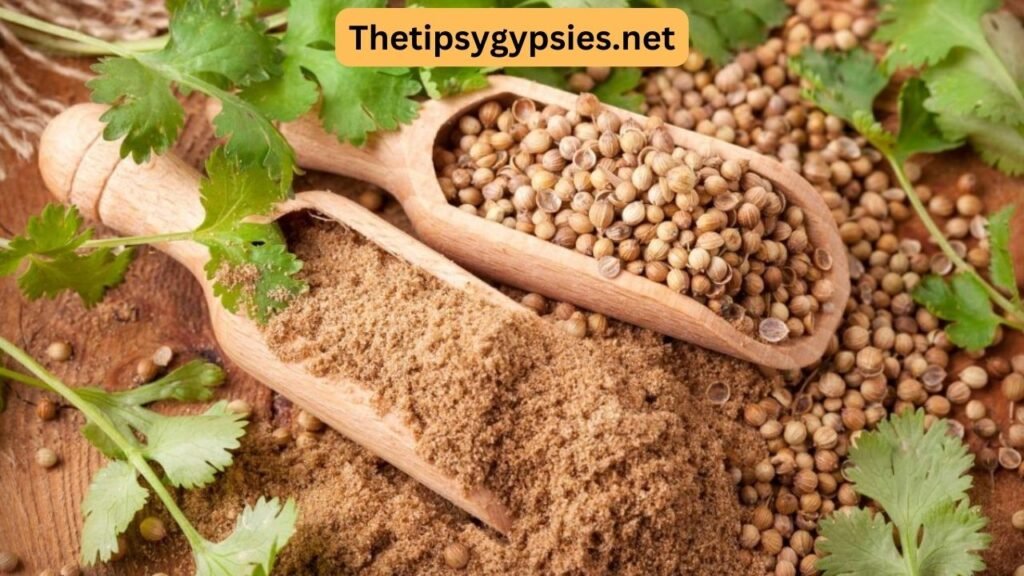Understanding Koriandri
At its core, koriandri refers to the plant better known as coriander. Its leaves, stems, and seeds all play different roles in cooking and medicine. The fresh green leaves are widely called cilantro in some regions, while the dried seeds are referred to as coriander seeds.
What makes koriandri remarkable is its ability to deliver two distinct flavors from the same plant:
The leaves have a fresh, citrusy, slightly peppery taste.
The seeds bring a warm, nutty, and lemon-like aroma.
This dual nature is why koriandri has earned a permanent place in kitchens worldwide.
Historical Roots of Koriandri
The story of koriandri stretches back thousands of years. Historical records show it was cultivated in ancient civilizations, including Mesopotamia, Egypt, and Greece. In fact, koriandri seeds were discovered in the tombs of Egyptian pharaohs, suggesting they valued it for both culinary and spiritual purposes.
The Greeks and Romans used koriandri not only in cooking but also in medicine. Over time, trade routes carried the herb across Asia, the Middle East, and eventually to the Americas. Its widespread adoption proves how adaptable and beloved koriandri has always been.
Culinary Uses of Koriandri
One of the biggest reasons koriandri remains popular is its wide range of culinary applications.
Global Cuisines Featuring Koriandri
Indian Cuisine: Both seeds and leaves are essential in curries, dals, chutneys, and spice blends like garam masala.
Mexican Cuisine: Fresh koriandri leaves (cilantro) enhance tacos, salsas, and guacamole.
Middle Eastern Dishes: Seeds are ground into stews, meat dishes, and falafel recipes.
European Kitchens: Koriandri seeds are found in sausages, breads, and pickling brines.
Everyday Home Uses
Mixing koriandri leaves into fresh salads for a burst of flavor.
Crushing koriandri seeds for marinades and barbecue rubs.
Adding a handful of fresh koriandri to soups, noodles, or rice for a finishing touch.
Nutritional Value of Koriandri
Besides its flavor, brings a strong nutritional profile to the table.
Vitamins: Excellent source of Vitamin A, C, and K.
Minerals: Contains calcium, potassium, iron, and magnesium.
Antioxidants: Helps protect cells against damage.
Dietary Fiber: Supports digestion and gut health.
This makes koriandri not just a seasoning but a valuable contributor to a healthy diet.
Health Benefits of Koriandri
Research and traditional medicine both point to the many health benefits of koriandri.
1. Supports Digestion
Koriandri seeds are often used in herbal teas to ease indigestion, bloating, and nausea.
2. Manages Blood Sugar
Studies suggest may help regulate blood sugar levels, which can benefit those with metabolic concerns.
3. Promotes Heart Health
The plant’s antioxidants and natural compounds may help lower cholesterol and improve blood circulation.
4. Aids Detoxification
Koriandri is believed to assist the body in removing toxins and heavy metals, boosting overall wellness.
5. Skin and Hair Benefits
With its antibacterial and anti-inflammatory properties, can promote clearer skin and healthier hair.
Cultural Importance of Koriandri
Beyond food and health, holds symbolic significance in various traditions. In Indian households, it is often used in festive dishes and religious offerings. In Mediterranean cultures, has historically been linked to love, vitality, and good fortune.
Its presence in both ancient rituals and modern meals demonstrates its enduring cultural value.
How to Store Koriandri Properly
To enjoy koriandri’s fresh flavor and aroma, proper storage is essential:
Leaves: Keep in the refrigerator wrapped in a damp cloth or store in airtight containers.
Seeds: Place in glass jars away from direct sunlight.
Powdered form: Use within a few months for best taste, as ground koriandri loses potency faster than whole seeds.
Modern Uses of Koriandri
In today’s kitchens, continues to evolve. Beyond traditional cooking, chefs experiment with -infused oils, salad dressings, and fusion dishes. Even in the wellness industry, extracts are found in supplements, detox drinks, and herbal remedies.
This adaptability makes it a timeless ingredient suited for both culinary enthusiasts and health-conscious individuals.
Conclusion
it is more than just an herb—it’s a story of culture, health, and culinary innovation. From its ancient roots in pharaohs’ tombs to its modern presence in international cuisines, has stood the test of time.
Whether you’re using the seeds in a spice blend or the leaves as a garnish, enriches your meals while offering health benefits. It remains a true symbol of how food can connect tradition, wellness, and flavor across the globe.






